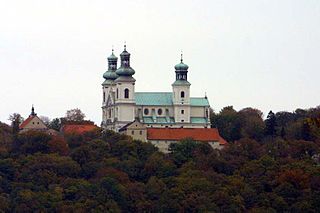
The Camaldolese Hermits of Mount Corona, commonly called Camaldolese is a monastic order of Pontifical Right for men founded by Saint Romuald. Its name is derived from the Holy Hermitage of Camaldoli, high in the mountains of central Italy, near the city of Arezzo. Its members add the nominal letters E.C.M.C. after their names to indicate their membership in the congregation. Apart from the Roman Catholic monasteries, in recent times ecumenical Christian hermitages with a Camaldolese spirituality have arisen as well.

Juliana Berners, O.S.B.,, was an English writer on heraldry, hawking and hunting, and is said to have been prioress of the St Mary of Sopwell, near St Albans in Hertfordshire.
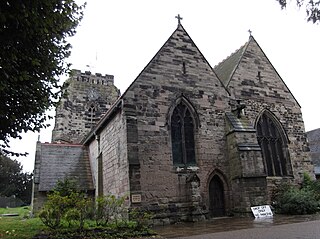
Polesworth Abbey was a Benedictine nunnery in Polesworth, North Warwickshire, England.
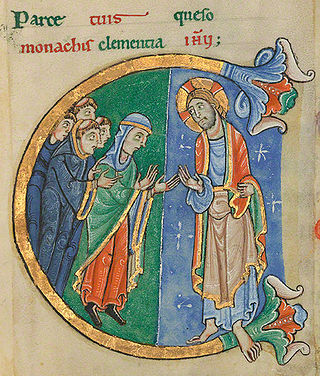
Christina of Markyate was born with the name Theodora in Huntingdon, England, about 1096–1098 and died about 1155. She was an anchoress, who came from a wealthy English family trying to accommodate with the Normans at that time. She later became the prioress of a community of nuns.

Winchcombe Abbey is a now-vanished Benedictine abbey in Winchcombe, Gloucestershire; this abbey was once in the heart of Mercia, an Anglo Saxon kingdom at the time of the Heptarchy in England. The Abbey was founded c. 798 for three hundred Benedictine monks, by King Offa of Mercia or King Coenwulf of Mercia. In its time, it was the burial place of two members of the Mercian ruling class, the aforementioned Coenwulf and his son Cynehelm, later venerated as Saint Kenelm.

Arthington Priory was an English monastery which was home to a community of nuns in Arthington, West Yorkshire, founded in the mid-12th century. The priory land is occupied by a residence called "Arthington Hall", which was built around 1585, and little, if anything, remains of the priory. The site of the priory church is possibly now occupied by a farmhouse called The Nunnery. The community was the only one of nuns of the Cluniac congregation in Yorkshire and one of two in England. It was established through a grant by Peter de Arthington.
Prior is an ecclesiastical title for a superior in some religious orders. The word is derived from the Latin for "earlier" or "first". Its earlier generic usage referred to any monastic superior. In abbeys, a prior would be lower in rank than the abbey's abbot or abbess.
St Albans High School for Girls is a selective, private day school for girls aged 4 – 18 years, which is affiliated to the Church of England and takes girls of all faiths or none. There are approximately 328 pupils in the preparatory school with 900 in the senior school and 186 sixth formers.
Amesbury Abbey was a Benedictine abbey of women at Amesbury in Wiltshire, England, founded by Queen Ælfthryth in about the year 979 on what may have been the site of an earlier monastery. The abbey was dissolved in 1177 by Henry II, who founded in its place a house of the Order of Fontevraud, known as Amesbury Priory.

The Iona Nunnery was an Augustinian convent of nuns located on the island of Iona in the Inner Hebrides of Scotland. It was established sometime after the foundation of the nearby Benedictine monastery in 1203. Bethóc, daughter of Somerled, was first prioress. The ruins of the nunnery stand in a peaceful precinct adjacent to Iona's main village, Baile Mor. They form the most complete remains of a medieval nunnery extant in Scotland. After the Reformation, the priory was dissolved and reduced to a ruin.
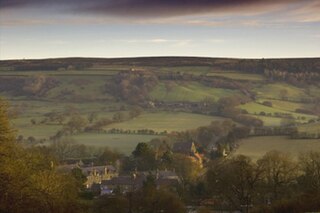
Rosedale Abbey is a village in the Ryedale district of North Yorkshire, England. It is approximately 8 miles (13 km) north-west of Pickering, 8 miles south-east of Castleton and within Rosedale, part of the North York Moors National Park.

Geoffrey de Gorham, sometimes called Geoffrey of Dunstable or of Le Mans, was a Norman scholar who became Abbot of St Albans Abbey, 1119 to 1146.
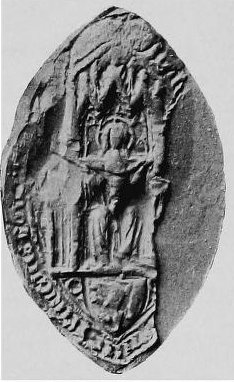
Markyate Priory was a Benedictine priory in Bedfordshire, England. It was established in 1145 and disestablished in 1537.

St Radegund's Priory, Cambridge was a Benedictine nunnery in Cambridge, Cambridgeshire, England. It was founded before 1144 and dissolved in 1496 by the initiative of John Alcock, Bishop of Ely.

Originally called the nunnery of Lekeley from the name of the land it was built upon, the former nunnery of Seaton is to the north of the parish of Bootle, Cumbria, England.

King's Mead Priory was a Benedictine Priory situated west of Derby, in the area currently known as Nun's Street, or Nun's Green. It was the only Benedictine Nunnery in Derbyshire.
St. George's Priory, Thetford was a Benedictine priory on the Suffolk side of Thetford, England. It was located at the current site of the British Trust for Ornithology, South of Nuns Bridges Road.

Carrow Abbey is a former Benedictine priory in Bracondale, southeast Norwich, England. The village on the site used to be called Carrow and gives its name to Carrow Road, the football ground of Norwich F.C., located just metres to the north. Granted by charter of King Stephen, the abbey was founded ca. 1146, and became a Grade I listed building in 1954.
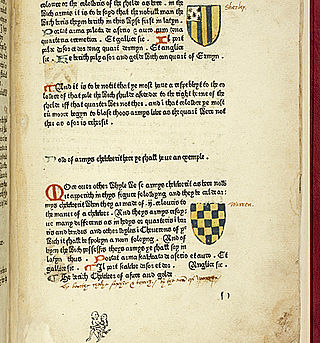
The Book of Saint Albans, or Boke of Seynt Albans, is the common title of a book printed in 1486 that is a compilation of matters relating to the interests of the time of a gentleman. It was the last of eight books printed by the St Albans Press in England. It is also known by titles that are more accurate, such as "The Book of Hawking, Hunting, and Blasing of Arms". The printer is sometimes called the Schoolmaster Printer. This edition credits the book, or at least the part on hunting, to Juliana Berners as there is an attribution at the end of the 1486 edition reading: "Explicit Dam Julyans Barnes in her boke of huntyng".






















